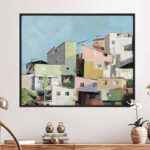Jerry’s Artarama, The Story and Vision
Proudly serving artists since 1968! Thank you for choosing Jerry’s for purchasing your art supplies.
Jerry’s only business is serving the interests of artists like you. From the first time artist to the professional we have everything under one roof at factory direct savings as much as 75% off traditional retails.
THE FULL STORY! About Jerry’s Artarama
We have always championed low prices for the artist
Our founder Jerry Goldstein started 49 years ago with the pledge to bring down the cost of art supplies by discounting them. Today it is common place but back then he was a pioneer. Providing the lowest prices and best deals is part of our DNA rooted from the very first day we opened our doors.
Rest assured we will do the our job daily to assure that you always get the most for less by shopping with us.
More importantly, the art supplies you buy and use from Jerry’s are crafted and curated to be the best only.
We do not sell cheap lousy supplies so if you want the best experience, the best outcome, the best performance and materials that last longer at amazing values.. choose Jerry’s!
What Makes Jerry’s Different! We Are Family & Dedicated to Artists!
Over 150 years of combined industry experience
- » Family owned and operated since 1968
- » Specializing in art supplies and framing
- » Manufacturers and distributors
- » Design and develop quality art supplies
- » Over 150 years of combined industry experience
- » Professional in house craftsman, custom canvas and framing departments
- » Warehouse efficiency, order inspection & fast shipping
- » Committed to artists and art (our office walls are filled with art!) Serving millions all over the world
Pioneers Of Discount Art Supplies
- Online eCommerce and 20 Retail Locations
- 4000+ Free Art Lessons ranging from all media and skill levels
- Art Instructional DVD’s and programs
- New Products designed for artists
- Exclusive online deals and offerings
- Bulk savings center – Buy More Save More
- Growing community online of amazing artists!
- Special products that only Jerry’s carries to help you Save More, Create More!
- Jerry’s LIVE events





